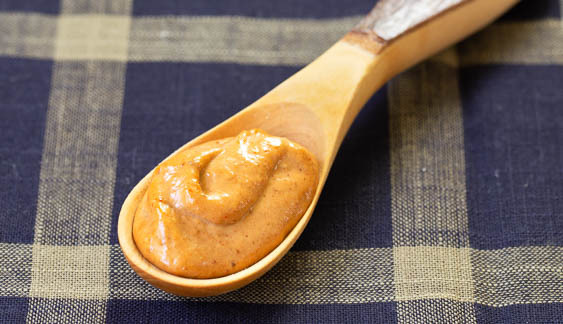Slow-Roasted Tomato Mayonnaise

introduction
When ripe plum tomatoes tossed with minced garlic, balsamic, and extra-virgin olive oil succumb to a long, slow oven roast, irresistible things happen. The tomatoes become sweet and meaty with traces of bright acidity and dark, caramelized piping on their edges. Originally created as a dip for polenta fries, this mayonnaise quickly became, for us, the ultimate enabler, making itself useful in oh so many ways. Spooned onto grilled fish or steak, stirred into chicken or shrimp salad, napping a buttered lobster roll filling, or gripping craggy polenta fries, this sauce has a soft supple drape and a slightly sweet, rich, almost haunting summery flavor. It keeps beautifully, too.
Cooking Remarks
Slow-roasted plum tomatoes have uses far exceeding a purée for mayonnaise. They’re great on an antipasto platter, mixed into a farro salad, or tucked into a split baguette with fresh mozzarella and speck. In this recipe, we roast enough tomatoes for the mayonnaise plus a future application. They are stalwart enough to hold for a couple of weeks in the refrigerator.
Don’t bother making this mayonnaise except with dark red, perfectly ripe plum tomatoes.
equipment mise en place
For this recipe, you will need a wire rack, a rimmed baking sheet, a large bowl, a liquid measuring cup, a food processor, and a silicone spatula.
-
for the slow-roasted tomatoes:
-
2pounds ripe plum tomatoes
-
3tablespoons extra-virgin olive oil
-
4teaspoons balsamic vinegar
-
¾teaspoon fine sea salt
-
½teaspoon ground black pepper
-
4medium garlic cloves, minced
-
-
for the mayonnaise:
-
½cup good-tasting neutral oil, such as avocado oil
-
¼cup extra-virgin olive oil
-
1large egg yolk
-
½teaspoon fine sea salt
-
¼teaspoon freshly ground black pepper
-
Scant ½ teaspoon smoked paprika
-
0.5ounce Parmesan Reggiano, finely grated on a rasp-style grater
-
-
Slow-roast the tomatoes: Adjust an oven rack to the lower-middle position and heat the oven to 275 degrees. Set a wire rack in a rimmed baking sheet.
-
Core the tomatoes. If they’re small to medium in size, cut the tomatoes in half lengthwise. If they’re large, cut them into thirds. Using your fingers, dig out the seeds.
-
In a large bowl, stir together the oil, balsamic, salt, pepper, and garlic. Add the tomatoes and toss until they are completely coated. Arrange the tomatoes cut side up on the prepared rack, spacing them evenly. Drizzle the oil mixture remaining in the bowl onto the tomatoes, then roast until the tomatoes are shriveled, darkened in color, and lightly caramelized around the edges, about 3 hours. Remove from the oven and let cool.
-
Make the mayonnaise: In a liquid measuring cup, combine the neutral oil and olive oil. Weigh out 4 ounces of the roasted tomatoes and turn them into the bowl of a food processor along with the egg yolk, salt, pepper, and smoked paprika; reserve the remaining tomatoes for another use. Process until well combined and the tomatoes have formed a thick puree, about 15 seconds. Scrape down the bowl with a silicone spatula. With the machine running, begin adding the oil in a series of droplets, never more than a thread-fine stream, through the feed tube. After about half the oil has been added and if the emulsion has formed (check by stopping the food processor and opening the lid—there may be a few small pools of oil that can be stirred in with the spatula but otherwise the mixture should be creamy and slightly thick), gradually increase the rate at which you stream in the oil, but keep it slow and fine. Make sure that the food processor is not overheating, which can cause the mayonnaise to break.
-
After all of the oil has been added, toss in the Parmesan and process until smooth, about 20 seconds. Transfer to an airtight container and refrigerate until ready to use, or for up to 1 week.